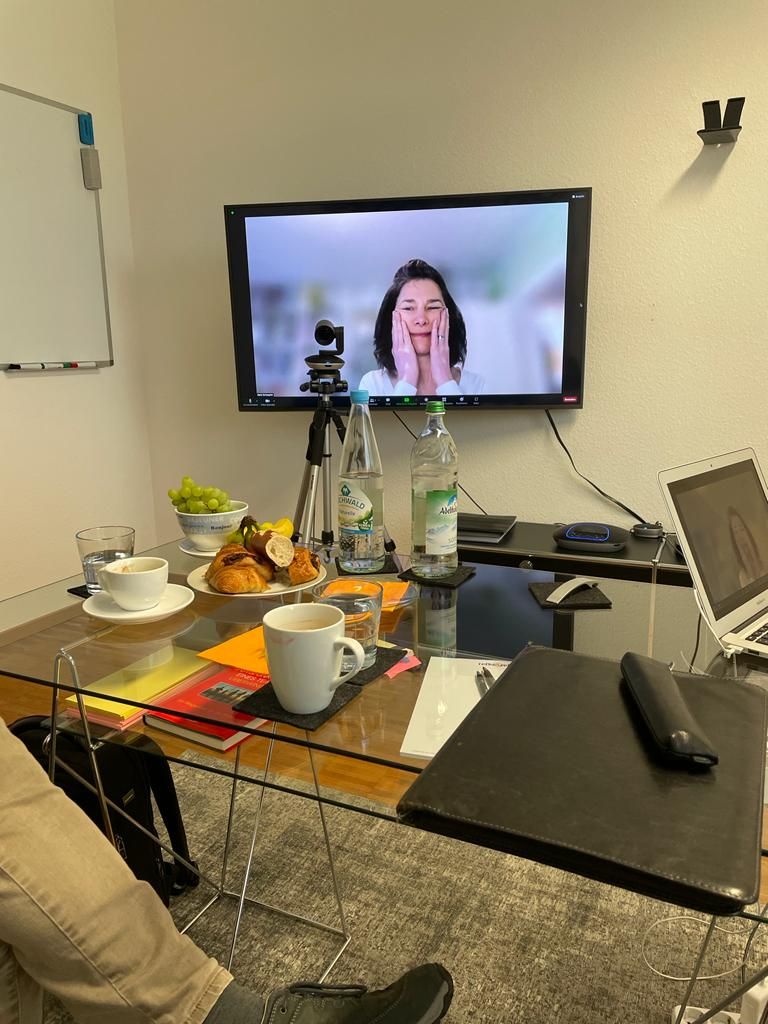No matter what your organization chooses to do, your hybrid 📱work model must be more than a quick fix.

And yes, hybrid working might seem simple – you just mix remote and in-person work and you get voilà – hybrid…right? 🛑nada! without a plan it won’t work!
Managing direct reports in hybrid working involves not only a clear plan to create an inclusive culture but also an overview, assessment and coordination of roles.
Managing direct reports in hybrid working involves not only a clear plan to create an inclusive culture but also an overview, assessment and coordination of roles.
👉🏽Which employees must be together to work on specific operational processes?
👉🏽And on which days in the month?
👉🏽When is it more advantageous to have people with certain skills work on-site together and how can synergies in this time slot best be leveraged?
This is a new kind of meta-coordination. Some businesses are hiring “Head of Hybrid Work” to carry out the coordination with all the involved parties and their corresponding roles.
To help ensure everyone feels part of a team, managers and team leaders should focus on learning some new skills and leveling the playing field. What does this mean❓
👉🏽best practices for using video conferencing, digital brainstorming platforms, sticky fun chat tools, cross-team mixers (here a tip: try Gatherround 1️) so that everyone feels included and affinity bias is limited.
👉🏽 Yes, it is more than tools! For teamwork to be successful new hybrid routines, communication norms and new habits are vital.
👉🏽Cultivating team culture 🤝🏽remains a top priority and finding ways to encourage unscheduled interaction, informal conversations, and moments of warm emotional connection.
And that having been said, video meeting fatigue is real 🥱
Before Virtual Reality 😁 becomes more of the norm for distributed team collaboration, how about trying out a “Video-Flex” (coined by virtual work expert Sacha Connor) culture within your teams? Consider intentionally when to use video and when there are meetings where it’s ok to go audio-only!
When I started reflecting and writing about remote teams and hybrid working, I facilitated team coaching workshops in which everyone who attended was remote. The playing field was level, we were all equal. Now the situation has changed. Together with my ICF Master peer coaching group, I wanted to explore this difference. We conducted an experiment with our own hybrid meeting. (see header picture).
Right off the bat, I can say, it was a *BIG* difference to be the only one beamed in on a pc monitor. There were the acoustic issues that were easily resolved, and I got used to feeling so exposed on the big screen. I quickly learned to ask when I didn’t catch something, and yet, I noticed how uncomfortable it is not to know what caused laughter or to be in on all the jokes 😉
We considered if the entire peer group should meet digitally; effectively making even those present on-site talk to each other via webcam. Maybe for our next experiment?
As a hybrid participant, you do have to work harder to make sure you are heard 😶 My coaching peer group is attuned to shifts in the dynamic, so this was not much of an issue. In other instances, I can imagine it sure would be 🤯
Here is German an further exploration on hybrid working tips in German.
Reach out to me to continue the discussion!